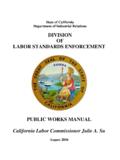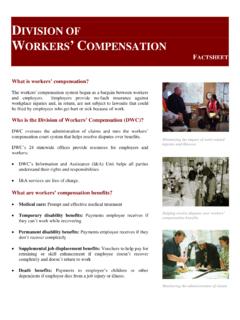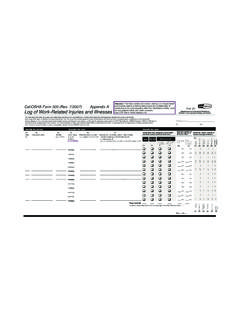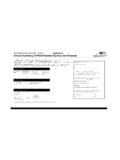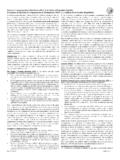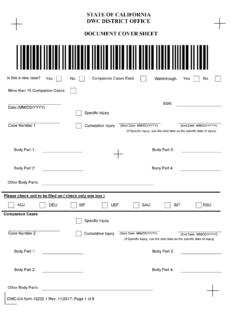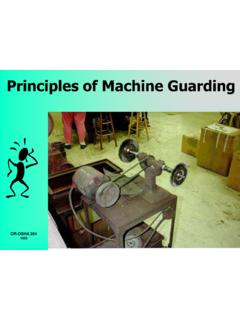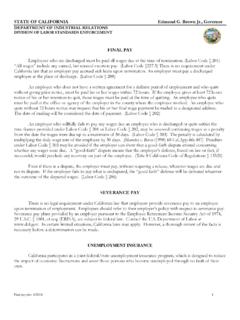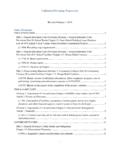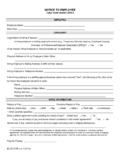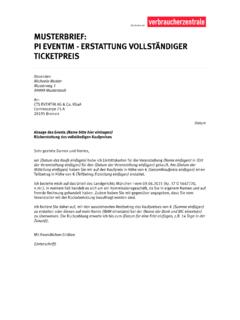Transcription of Cal/OSHA Publications Unit Rev. May 2019
1 Page 1 of 12 HIPP /Sample Procedures Rev. EMPLOYER SAMPLE PROCEDURES FOR HEAT ILLNESS PREVENTION Cal/OSHA Publications Unit Rev. May 2019 California employers with any outdoor places of employment must comply with the Heat Illness Prevention standard, California Code of Regulations, title 8, section 3395 (8 CCR 3395). These procedures have been created to assist employers in establishing their own heat illness prevention procedures and to reduce the risk of work-related heat illnesses to their employees. These procedures are not intended to supersede or replace the application of any other title 8 sections, particularly 8 CCR 3203, Injury and Illness Prevention Program (IIPP), which requires an employer to establish, implement, and maintain an effective IIPP. You may integrate your heat illness prevention procedures into your IIPP. You must also be aware that other standards also apply to heat illness prevention, such as the construction, agriculture, and general industry requirements to provide drinking water, first aid, and emergency response.
2 Note: These procedures describe the minimum essential heat illness prevention steps applicable to most outdoor work settings. In work environments where there is a higher risk for heat illness ( , during a heat wave or other severe working or environmental conditions), you must exercise greater caution and employ protective measures beyond what is listed in this document, as needed to protect employees. To effectively establish your company procedures, carefully review the key elements listed in this document, as well as the examples provided, then develop written procedures applicable to your workplace. The Heat Illness Prevention Plan must be written in English and the language understood by the majority of the employees and must be available at the worksite. Implement procedures, train employees and supervisors on your company procedures, and follow-up to ensure your procedures are fulfilled. To tailor these procedures to your work activities, evaluate and consider the specific conditions present at your site such as: 1.
3 The size of the crew. 2. The length of the work-shift. 3. The ambient temperature (which can either be taken using a simple thermometer or estimated by monitoring the weather). Page 2 of 12 HIPP /Sample Procedures Rev. 4. Additional sources of heat or the use of personal protective equipment that may increase the body s heat burden. 5. Again, these sample procedures do not include every workplace scenario so it is crucial that you take into account and evaluate conditions found in your individual workplace that are likely to cause a heat illness. Mandatory requirements for written procedures must also do the following: 1. Identify the person(s) responsible for the particular task(s) ( , s upervisor, foreman, safety coordinator, crew l eader). 2. Describe in detail the steps required to carry out the task and ensure that the task is accomplished successfully, including the number and size of water containers and shade structures; distance to their placement; and frequency of water replenishment, water breaks/reminders, weather-tracking, etc.
4 For additional information, see the Enforcement Q&A. 3. Specify how you will communicate these procedures to your employees, particularly the person(s) assigned to be responsible for them, and how you will verify that the procedures and instructions are being followed. Page 3 of 12 HIPP /Sample Procedures Rev. (Employer's Name)The following designated person(s) ( , program administrator, safety coordinator, supervisor, foreman, field supervisor, crew leader) has (have) the authority and responsibility for implementing the provisions of this program at this worksite. Name/Title/Phone Number : Choose the items below that are applicable to your work operations for water and shade provision, high heat procedures, acclimatization methods, and emergency procedures, and add additional language to specify how your company intends to implement these provisions at the job site. Procedures for the Provision of Water: Drinking water containers (5 to 10 gallons each) will be brought to the site so that at least two quartsper employee are available at the start of the shift.
5 All employees, whether working individually or insmaller crews, will have access to drinking water. Paper cones or bags of disposable cups and the necessary cup dispensers will be made available toemployees and will be kept clean until used. As part of the Effective Replenishment Procedures, the water level of all containers will be checkedperiodically ( , every hour, every 30 minutes) and more frequently when the temperature rises. Watercontainers will be refilled with cool water when the water level within a container drops below 50percent. Additional water containers ( , five-gallon bottles) will be delivered to replace water asneeded. Water will be fresh, pure, suitably cool, and provided to employees free of charge. Supervisors willvisually examine the water and pour some on their skin to ensure that the water is suitably cool. Duringhot weather, the water must be cooler than the ambient temperature, but not so cool as to causediscomfort. Water containers will be located as close as practicable to the areas where employees are working(depending on the working conditions and layout of the worksite) to encourage the frequent drinking ofwater.
6 If field terrain prevents the water from being placed within a reasonable distance from theemployees, bottled water or personal water containers will be made available so that employees canhave drinking water readily accessible. Since water containers are smaller than shade structures, they can be placed closer to employeesPage 4 of 12 HIPP /Sample Procedures Rev. than shade structures. Placing water only in designated shade areas or where toilet facilities are located is not sufficient. When employees are working across large areas, water will be placed in multiple locations. For example, on a multi-story construction site, water will be placed in a safely accessible location on every floor where employees are working. All water containers will be kept in a sanitary condition. Water from non-approved or non-testedwater sources ( , untested wells) is not acceptable. If hoses or connections are used, they must beapproved for potable drinking water systems, as shown on the manufacturer s label.
7 Daily, employees will be reminded of the location of the water coolers and of the importance ofdrinking water frequently. When the temperature exceeds, or is expected to exceed, 80 degreesFahrenheit, brief tailgate meetings will be held with employees each morning to review theimportance of drinking water, the number and schedule of water and rest breaks, and the signs andsymptoms of heat illness. Audible devices, such as whistles or air horns, will be used to remind employees to drink water. When the temperature equals or exceeds 95 degrees Fahrenheit, or during a heat wave, pre-shiftmeetings will be conducted before the commencement of work to both encourage employees to drinkplenty of water and to remind employees of their right to take a cool-down rest when , the number of water breaks will be increased. Supervisors/foremen will lead by exampleand remind employees throughout the work shift to drink water. Individual water containers or bottled water provided to employees will be adequately identified toeliminate the possibility of drinking from a co-worker s container or addition to the procedures above, the employer will ensure the provision of water using the following procedures: for Access to Shade: Shade structures will be opened and placed as close as practicable to the employees when thetemperature equals or exceeds 80 degrees Fahrenheit.
8 When the temperature is below 80 degreesFahrenheit, access to shade will be provided promptly, when requested by an : The interior of a vehicle may not be used to provide shade unless the vehicle is air-conditioned and the air conditioner is on. Enough shade structures will be available at the site to accommodate all of the employees who areon a break at any point in time. During meal periods, there will be enough shade for all employees whochoose to remain in the general area of work or in areas designated for recovery and rest periods.(Employers may rotate employees in and out of meal periods, as with recovery and rest periods.)Page 5 of 12 HIPP /Sample Procedures Rev. Daily, employees will be informed of the location of the shade structures and will be encouraged totake a five-minute cool-down rest in the shade. An employee who takes a preventative cool-down restbreak will be monitored and asked if they are experiencing symptoms of heat illness. I n no case will theemployee be ordered back to work until signs or symptoms of heat illness have abated (see the sectionon Emergency Response for additional information).
9 As crews move, shade structures will be relocated to be placed as close as practicable to theemployees so that access to shade is provided at all times. All employees on a recovery or rest break or ameal period will have full access to shade so they can sit in a normal posture without having to be inphysical contact with each other. Before trees or other vegetation are used to provide shade (such as in orchards), the thickness andshape of the shaded area will be evaluated to ensure that sufficient shadow is cast to protect employees. In situations where it is not safe or feasible to provide access to shade ( , during high winds), anote will be made of these unsafe or unfeasible conditions and alternative procedures will be used toprovide access to shade upon request. (Below, describe the alternative procedure for access to shade.) For non-agricultural employers, cooling measures other than shade ( , use of misting machines)are provided in lieu of shade if these measures are demonstrably as effective as shade in allowingemployees to cool, and of the steps that will be taken to provide alternative cooling measures but withequivalent protection as addition to the procedures above, the employer will ensure access to shade using the following procedures: for Monitoring the Weather: The supervisor will be trained and instructed to check in advance the extended weather forecasts can be checked with the aid of the internet ( ), by callingthe National Weather Service phone numbers (see CA numbers below), or by checking the WeatherChannel TV Network.
10 The work schedule will be planned in advance, taking into consideration whetherhigh temperatures or a heat wave is expected. This type of advanced planning should take placewhenever the temperature is expected to reach 70 degrees Fahrenheit or Dial-A-Forecast Eureka 707-443-7062 Hanford 559-584-8047 Los Angeles 805-988-6610 (#1) Sacramento 916-979-3038 Page 6 of 12 HIPP /Sample Procedures Rev. CALIFORNIA Dial-A-Forecast San Diego 619-297-2107 (#1) San Francisco 831-656-1725 (#1) Prior to each workday, the forecasted temperature and humidity for the worksite will be reviewedand will be compared against the National Weather Service Heat Index to evaluate the risk level for heatillness. Determination will be made of whether or not employees will be exposed to a temperature andhumidity characterized as either extreme caution or extreme danger for heat illnesses. It isimportant to note that the temperature at which these warnings occur must be lowered as much as 15degrees if the employees are working in direct sunlight.
